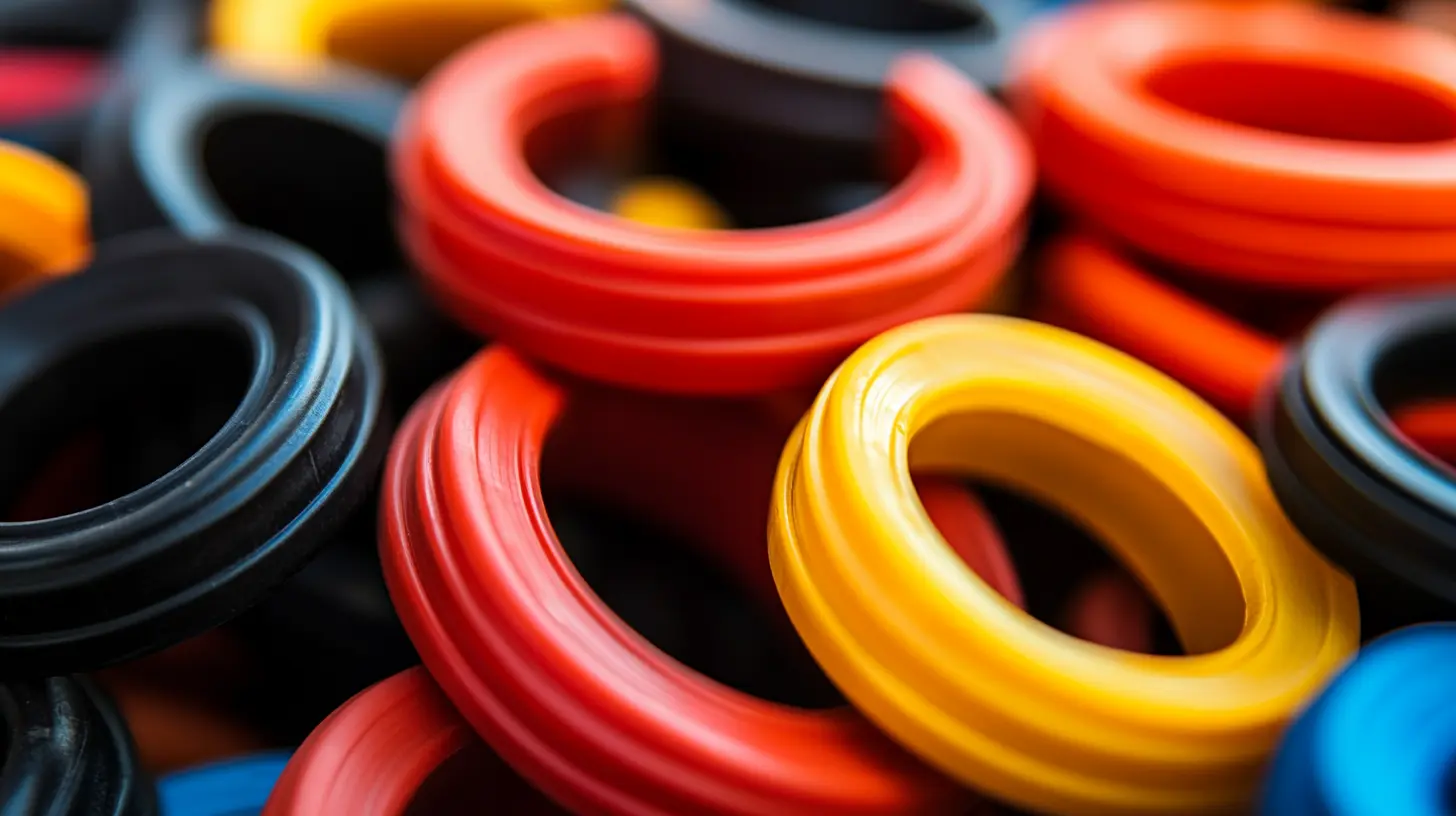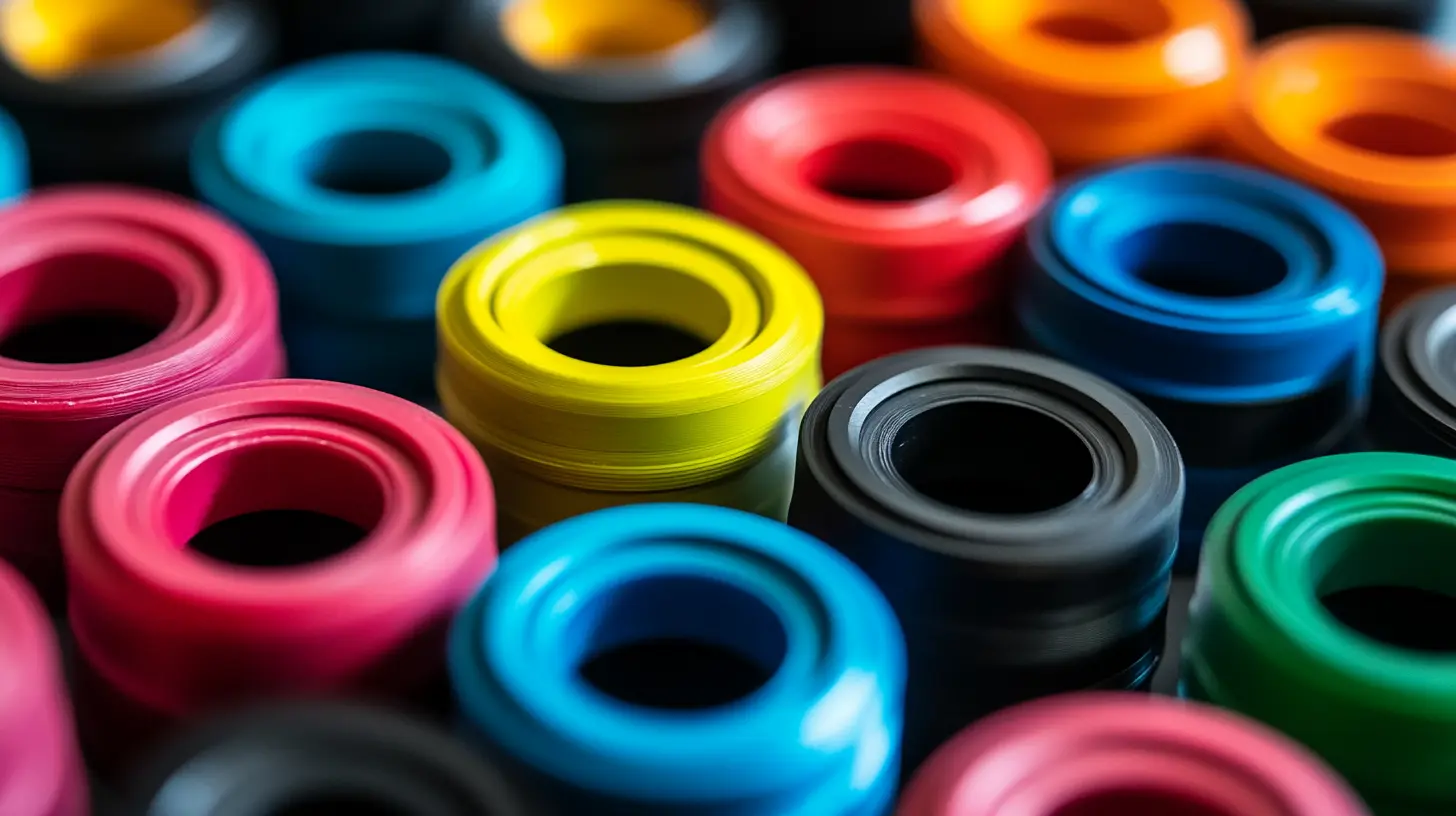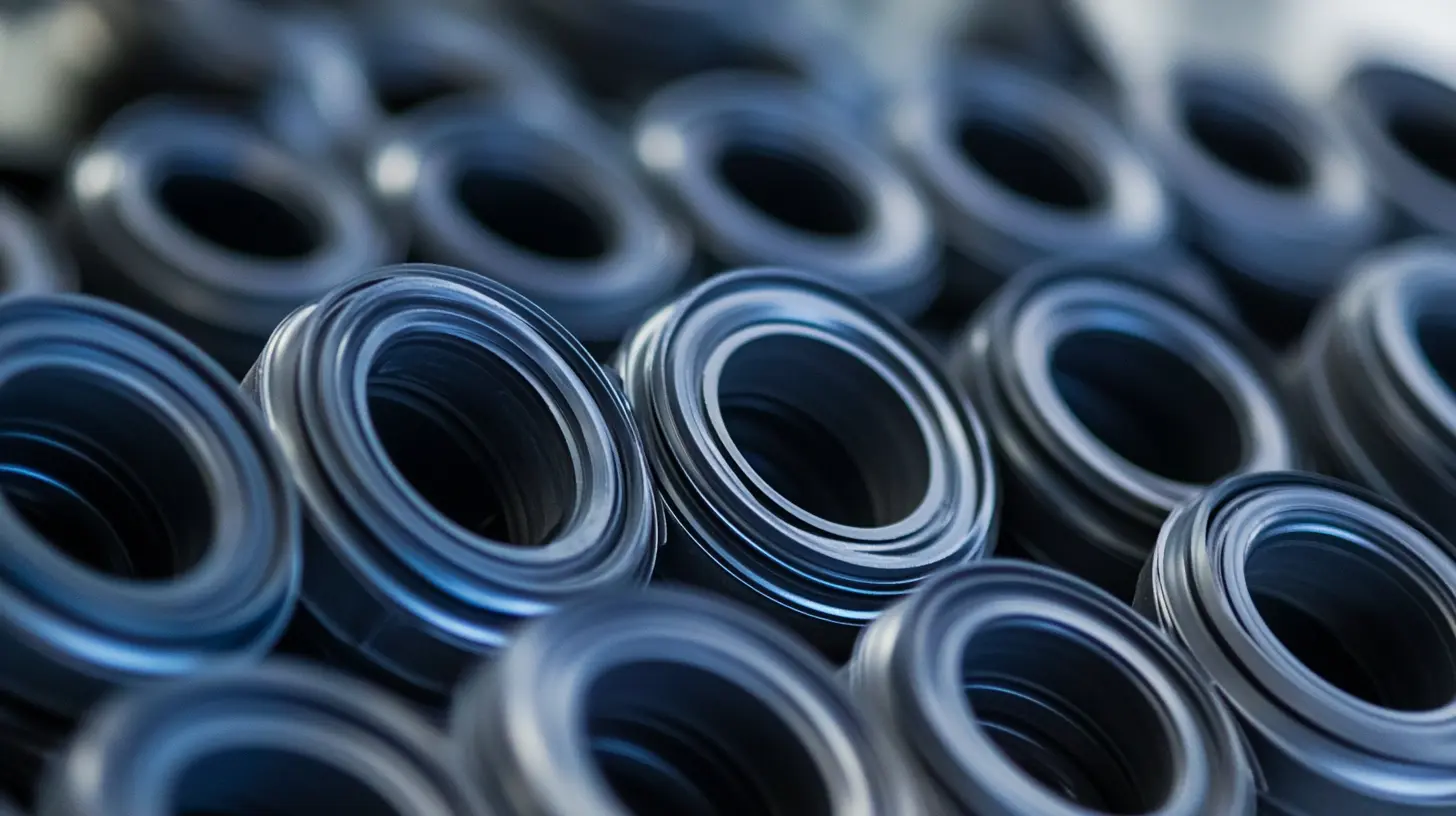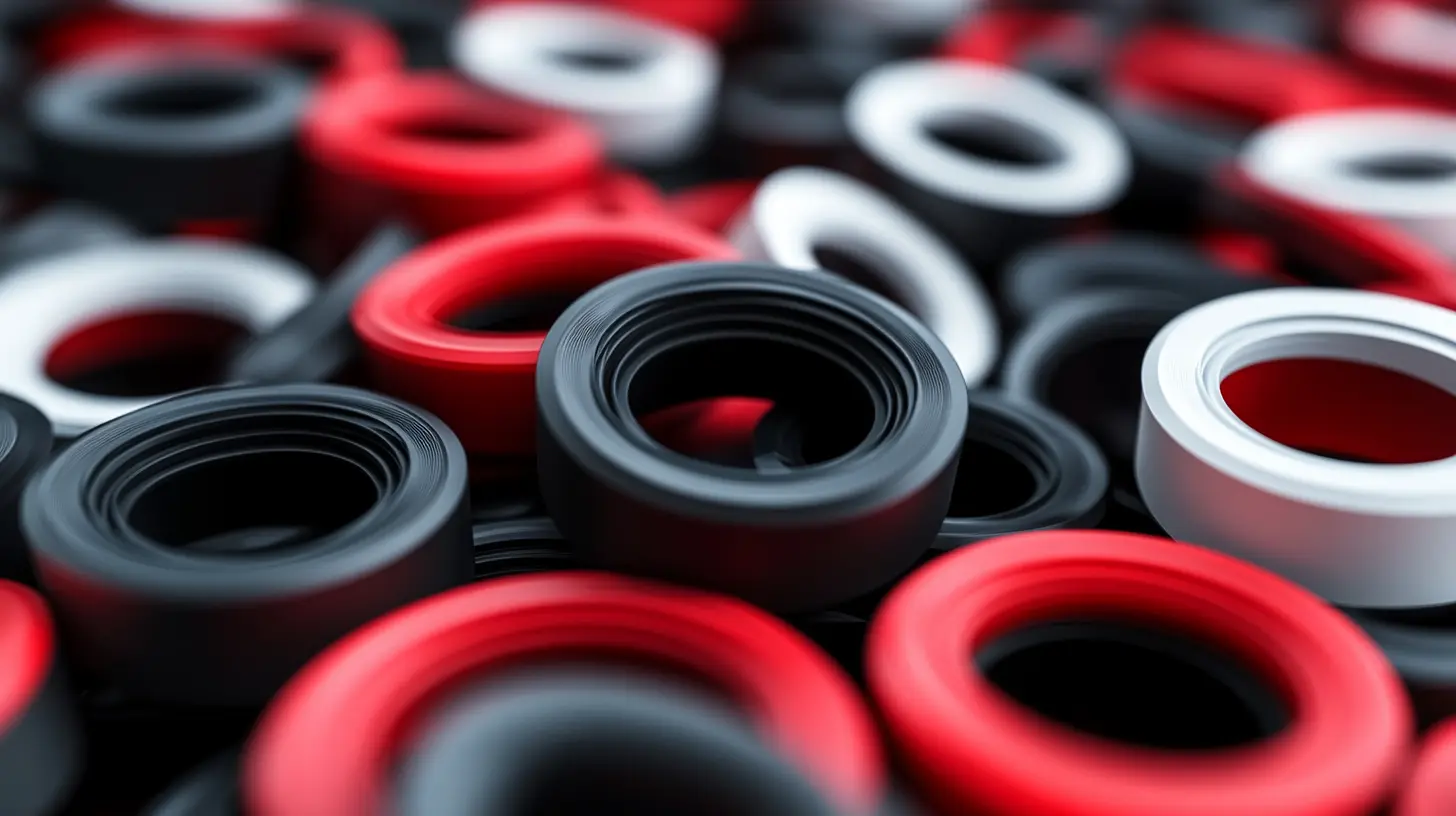
- sales@bjbod.com
- Mon - Sat at 7:00AM to 9:00PM

Precision and efficiency continue to be the hallmarks of ongoing developments in industrial manufacturing. As shifts in global market trends continue, one such product making waves all over the world would be the Rubber Flex Collet. This invention is meant to alter the entire manufacturing machining scenario because of its superior versatility for machining applications: throughout a wide range of workpiece sizes and shapes, accuracy is still maintained. Interestedly, as we look into the near future of 2025, what the insights and case studies about Rubber Flex-Collet would mean to the businesses that would want to learn from them to remain innovative and competitive in the industry.
We, at Beijing BOD Technology Co., Ltd, which is at the forefront of technology in new peripheral accessories and materials since 2011, make a strength in various products related to angle heads, compressed air water separators, and environmental protection equipment to the possibilities of great solutions to quality demands of our clients. This blog discusses the expected world trend of Rubber Flex Collet in the view of different industries with case studies on how completely it can be used.

As the key market players come up with innovations to suit the ever-changing needs of the industry, the global Rubber Flex Collet market is witnessing a major makeover. The market looks quite fast-paced on account of technological advancements and increasing demand from varied segments. Various stakeholders right from manufacturers to supply chain entities involved are collectively making this market more integrated and accommodating. The recent trends in the market show that the innovative materials and designs in rubber flex collets are a key driving force for growth. As per market analyses, the revenue generated in the rubber products segment is supposedly going to grow at a much-anticipated CAGR of over 5% between 2025 and 2034. The reason for growth in this segment is the growing acceptance of advanced rubber components for automotive and aerospace applications where precision and flexibility become the prime factors. Further evolution in standards could stem from consumer tastes, moving towards adaptable and sustainable materials as indicated by insights on the global educational toy market. It, therefore, follows that the rubber flex collet sector stands to gain immensely from the market share as long as it remains in harmony with these shifts in preferences. With these factors in play, projected revenues of the educational toys market are estimated to hit $28 billion by 2025, and a similar upsurge could be foreseen in the rubber-based industry, heavily implying the interlinked nature of market demands.

Very few trends today are moving toward new materials, techniques, and even new usages of rubber flex collets. According to a MarketsandMarkets report, the global rubber flex collet market is expected to Gulculate from about $320 million by the end of this period to a CAGR of 5.2% between 2020 and 2025. The reason for this growth can be attributed to the improvement in elastomeric compounds driving better performance and enhanced durability of rubber flex collets in many industrial applications.
One of the noticeable trends is the increasing use of sustainable raw materials in rubber flex collet production. Instead, manufacturers are developing bio-based and recycled rubber materials for producing these raw materials when the market poses enough demand for environmental transparency. According to a publication by Grand View Research, that covers the area, it is believed that using these materials can save anywhere up to 30% of production costs, which will take the industry closer to larger environmental objectives.
Further, modern technologies are paving a new direction for the production of rubber flex collets by incorporating advanced techniques such as 3D printing and automation into the process. In the words of a Deloitte report, organizations will find their productivity much increased by as much as 50 times, with their innovations attesting to changing production responses to different needs in sectors as diverse as auto manufacturing and aerospace.
These provide not just a glimpse into changing production methodologies but also an indication of the industry's moving forward in general, redefining innovative material science-more specifically, the rubber flex collet industry, which would position these industries in preparation for and response to future challenges and opportunities.

From the survey conducted, it has been observed that the need for rubber flex collets is supposed to increase significantly by the year 2025 owing to advancements in the trend of industrial automation. The flexible, and reliable components such as these rubber flex collets, would soon become an indispensable requirement of an industry as more and more industries convert their manually controlled systems into automated systems. Rubber flex collets are important components that serve various applications ranging from machinery requiring extremely precise movements and flexibility to meet the varying operational demands.
Current developments in automation reflect a constant trend of improvement for efficiency and productivity. The introduction of new products, as in advanced powertrain technology in prototypes of vehicles, is demonstrating such newonomy changes toward automation in old-fashioned manufacturing. This would not remain only within the automotive sector; it is applicable across all industries relying on flexible manufacturing systems, and hence, it naturally increases demand for rubber flex collets, enabling rigorous operations.
Moreover, the rising importance of components that would meet increased automation requirements can be demonstrated with strategic partnerships and collaborations for supply chain optimization. Rubber flex collets have a promising future since, by 2025, they will feature among the elements critical to the establishment of industrial automation because industries are expected to evolve and become smart with their technologies.

The rubber flex collet market is globally expected to gain huge traction by 2025, especially in the regional key areas which present growth opportunities unique to them. With many industries realizing the powers of rubber flex collets in the performance and longevity of machinery, much emphasis is put on investing and developing these areas-the likes of Southeast Asia and North America.
Southeast Asia has been known for manufacturing automotive parts and remains a premier area for rubber flex collet growth. The rising demand for durable and versatile components in varied applications has spurred innovation and product adaptation among local manufacturers. The other appeal to companies intending to cover global markets is the region's strategic location together with the established supply chains.
On the other hand, North America is witnessing renewed demand as industries seek a more sustainable and efficient alternative in replacing conventional materials. This change poses an opportunity for rubber flex collet manufacturers to design products for an increasingly dynamic market. Case studies suggest that companies investing in R&D within these regions can expect significant market share through the application of rubber technology in new product development.
This regional analysis of the rubber flex collet market, therefore, points toward the critical areas of growth and innovation and foreshadows future advancements and business opportunities for the rubber industry.
Change is an increasingly pressing concern in sustainability over rubber flex collet manufacture, as the market scenario is changing. This is the time when manufacturers are looking into other eco-friendly materials and processing methods that can reduce environmental impact in the wake of greener production. This movement also helps with carbon footprint reduction and, moreover, fits into the larger worldwide trend toward sustainability that all industries, from construction to electronics, have since adopted.
The projected take-off of the construction plastics market by 2033 shows that sustainability has a stake in several related sectors nowadays. Plastic materials, like plastic pipes for plumbing and irrigation, are highly utilized; hence, their sourcing and production require the utmost responsibility if they are to reduce waste and increase recycling. Such paradigms in rubber flex collet production could, therefore, arrive at break-away solutions that overpower aforementioned sustainability considerations to improve product performance and ecological consciousness.
With sustainability being made a focal point in supply chains in recent times, avenues for sharing best practices in collaboration between industries will emerge. Input drawn from advancements made in other markets, LED display and robotics, stress the need for friendly innovations. Emphasizing sustainability in rubber flex collet manufacture meets consumers' demands and thereby stands testimony to the larger sustainable future in the entire manufacturing realm.
Implementation of Rubber Flex Collets in multimodal industrial processes provides ample successful implementations and shows the scope of versatility and functionality of the collets. These collets had a reported effect on improvement in efficiency and reduction in downtime in industries like automotive manufacturing and precision engineering. As per Market Research Future, the Rubber Flex Collets market is projected to grow at a CAGR of 5.6% to 2025 due to innovations in material technology and demand for high-precision tools.
One notable case study is the practical application of Rubber Flex Collets in the assembly line of one of the leading manufacturers of automotive parts. Here, the mass production speed was increased by 30%, all within stringent tolerances. The flexibility of the collets has allowed for the rapid alteration of machining parameters to maximize the usefulness of existing equipment and avoid costly retooling.
Another example is from the aerospace industry where a leading aerospace engineering company used Rubber Flex Collets in the turbine manufacturing process. The company reported a 25% decrease in waste of material and significant processing time savings. The adaptability and toughness of the Rubber Flex Collets under high-stress situations are said to impart a safer and greener manufacturing process, a finding in agreement with the study from the International Journal of Advanced Manufacturing Technology and further inferring their efficacy in precision applications.
The rubber flex collet industry is expected to undergo extensive changes as followed by various trends across the globe, looking at 2025. Any manufacturing process flexibility and the resulting demand for such products will also define future expectations of rubber flex collets, augmented with advanced technology. Innovations such as better used materials and better designs will most probably result in more durability and performance to meet diverse industry requirements from automotive to consumer goods.
The global market scenario is not only dependent on internal factors but also on diverse external factors like geopolitical shift and trade policies. For instance, the manufacturers are rethinking the sourcing strategy because of these recent disturbances, resulting in changing global supply chains. It affects the production of rubber flex collets and also opens doors for such companies adapting quickly to these changes. Furthermore, sustainability has always been of paramount interest, because it pursues eco-friendly materials and processes, which are in demand with emerging and continuous increasing customer expectations and many regulation standards.
Major takeaways of different reports advocate the view that capital investment on innovation and improved manufacturing capabilities would be the key elements driving firms in the rubber flex collet market. Secondly, the companies would establish their strategy in line with the anticipated demand in the evolving scenario by leveraging their capabilities in data analytics to learn customer preferences and trends regarding the marketplace.
As of now, the rubber flex collet market is navigating its way to significant headwinds. Some of them affecting the market include raw material price fluctuations, which add uncertainty into production costs. The next issue that needs to be addressed is the increased pressure on manufacturers to come up with solutions that match the public demand of eco-friendly materials. Manufacturers will be compelled to invest in R&D for such solutions that would meet performance levels but be international environmental regulations compliant. Companies must also secure long-term contracts and alternative suppliers within their portfolio to counteract the downside risks associated with price volatility.
Another issue with the rubber flex collet market is alternative collet solutions that compete with it, such as metal or composite collets. Businesses must emphasize the unique benefits of rubber flex collets to counter this competition, such as superior flexibility, shock absorption, and noise reduction properties. Designate marketing strategies and educational campaigns that demonstrate these features, as well as develop case studies combined with major industry players to substantiate their successful applications, and this can easily prove attractive value with potential customers.
Finally, there are interruptions in the supply chain which have manifested due to global events to ensure that the product is not consistently available on demand and is not reliable. Companies investigate optimizing their logistics and inventory management systems to improve responsiveness to the market demand. Strong relations with suppliers and the sourcing for local options would also serve as cushions when unforeseen disruptions occur in supply chain channels. These challenges could be dealt with proactive strategies, thus making the rubber flex collet market more resilient about the position of growth by 2025 and beyond.
Key regions expected to see significant growth include Southeast Asia and North America.
Southeast Asia is recognized for its manufacturing and automotive parts industry, where rising demand for durable components is driving innovation and product adaptation.
The region is experiencing a shift towards sustainable and efficient alternatives to traditional materials, creating opportunities for tailored rubber flex collet solutions.
The market faces challenges such as fluctuating raw material prices, increasing demand for eco-friendly materials, competition from alternative collet solutions, and supply chain disruptions.
Manufacturers can secure long-term contracts or diversify their supplier base to manage the unpredictability in production costs.
Companies should emphasize the unique benefits of rubber flex collets, engage in targeted marketing strategies, and collaborate with industry players to showcase successful applications.
Manufacturers need to invest in research and development to innovate sustainable alternatives that meet performance standards and align with environmental regulations.
Companies should optimize logistics and inventory management, build strong supplier relationships, and explore local sourcing options to enhance product availability.
Rubber flex collets provide superior flexibility, shock absorption, and noise reduction, which are key benefits to highlight in marketing efforts.
The rubber flex collet market is poised for growth by 2025, as companies implement proactive strategies to overcome challenges and capitalize on regional opportunities.
